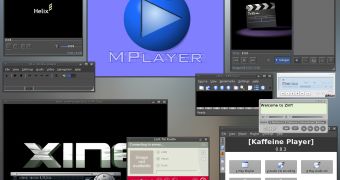ArtistX 0.4, a Debian-based live DVD with a collection of audio, video and 2D/3D graphics software, was released yesterday, as announced by Marco Ghirlanda, the project's main developer.
The distribution can transform a normal computer in a true multimedia production studio, containing almost all the available free audio, 2D and 3D graphics and video software. ArtistX boots directly into a running system. Everything you create can be stored on USB devices or CD/DVD medium while it is working.
ArtistX 0.4 comes in two variants, one with GNOME and the other with KDE set as default desktop environment, and both have the Powua Client and Powua Tutorials included. Powua, the Super Internet Computer, was created to speed up CPU-intensive tasks. You can make an animation with Blender and you can upload it on Powua, which will render it for you.
Gnome 2.20, KDE 3.5.7, the 2.6.22 Linux kernel and almost 2500 free multimedia applications are included on ArtistX 0.4. Here are some apps that you can find on the distribution:
2D Graphic Software: GIMP (an experimental version), InkScape, Nip2, Krita, Cinepaint, Synfig, Rawstudio, Skencil and Hugin.
3D Graphic softwares: Blender, Wings3D, Kpovmodeler + Povray 3.6, K3D.
Video applications: Cinelerra, Kino, Openmovieeditor, Kdenlive, Pitivi, AviDemux, Devede, and many others.
Video and Music players: Mplayer, Helix Player, Videolan, Xine, Kaffeine, KMPlayer, LastFM and more.
Music software: PD and externals, Rosegarden, Ardour, TerminatorX, Cecilia/Csound, Gnusound, Mixxx and many others.
ArtistX resembles Dyne:bolic from many points of view, like the fact that they don't have to be installed on the system to do their work, but Dyne:bolic is optimized for older computers, like those equipped with a Pentium II processor, or equivalent. ArtistX opted for KDE and GNOME, while Dyne:bolic uses XFCE, a less resources-consuming desktop environment.
You can download ArtistX 0.4 right now from Softpedia.

 14 DAY TRIAL //
14 DAY TRIAL //